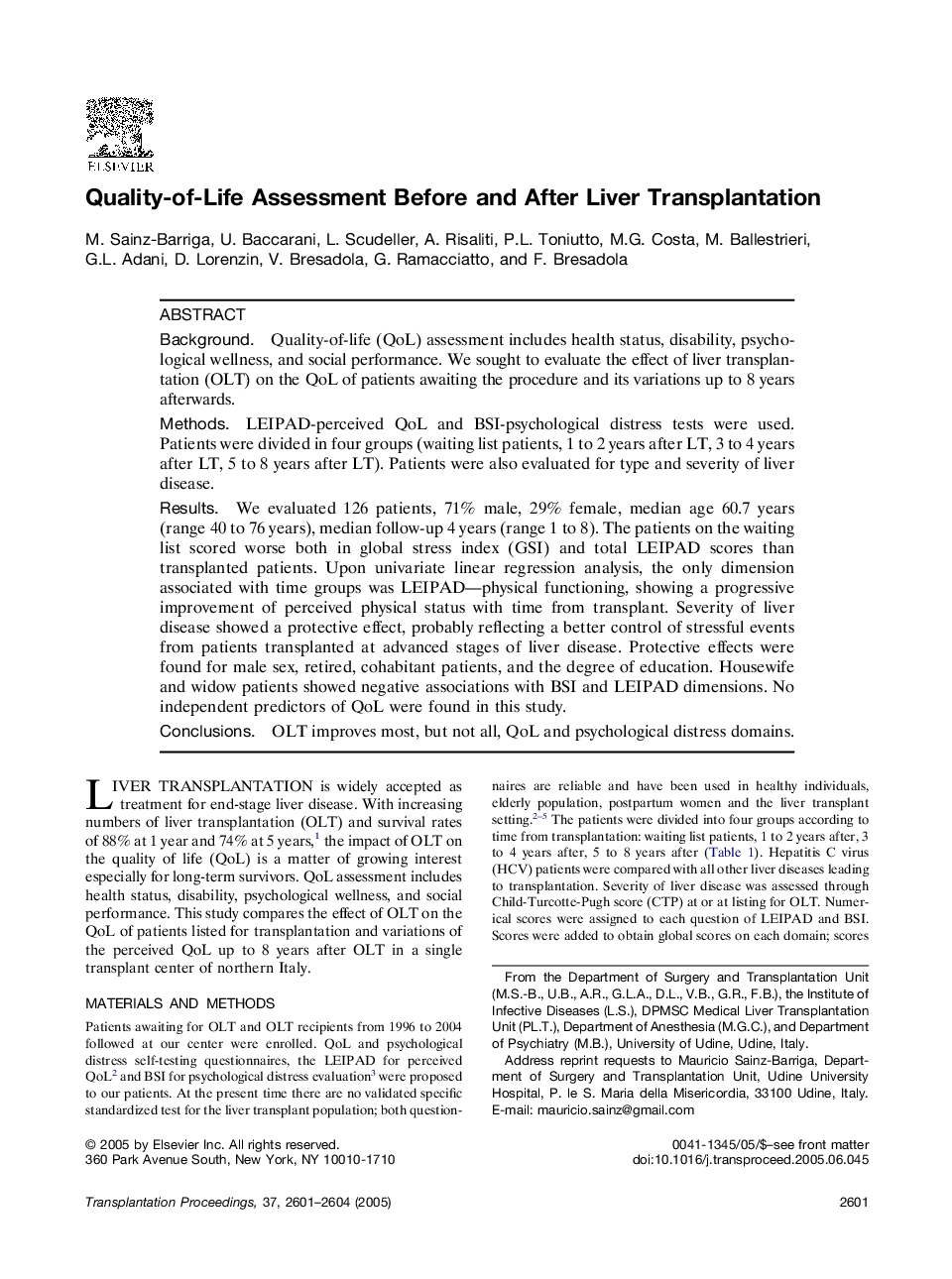| Article ID | Journal | Published Year | Pages | File Type |
|---|---|---|---|---|
| 4263664 | Transplantation Proceedings | 2005 | 4 Pages |
BackgroundQuality-of-life (QoL) assessment includes health status, disability, psychological wellness, and social performance. We sought to evaluate the effect of liver transplantation (OLT) on the QoL of patients awaiting the procedure and its variations up to 8 years afterwards.MethodsLEIPAD-perceived QoL and BSI-psychological distress tests were used. Patients were divided in four groups (waiting list patients, 1 to 2 years after LT, 3 to 4 years after LT, 5 to 8 years after LT). Patients were also evaluated for type and severity of liver disease.ResultsWe evaluated 126 patients, 71% male, 29% female, median age 60.7 years (range 40 to 76 years), median follow-up 4 years (range 1 to 8). The patients on the waiting list scored worse both in global stress index (GSI) and total LEIPAD scores than transplanted patients. Upon univariate linear regression analysis, the only dimension associated with time groups was LEIPAD—physical functioning, showing a progressive improvement of perceived physical status with time from transplant. Severity of liver disease showed a protective effect, probably reflecting a better control of stressful events from patients transplanted at advanced stages of liver disease. Protective effects were found for male sex, retired, cohabitant patients, and the degree of education. Housewife and widow patients showed negative associations with BSI and LEIPAD dimensions. No independent predictors of QoL were found in this study.ConclusionsOLT improves most, but not all, QoL and psychological distress domains.
